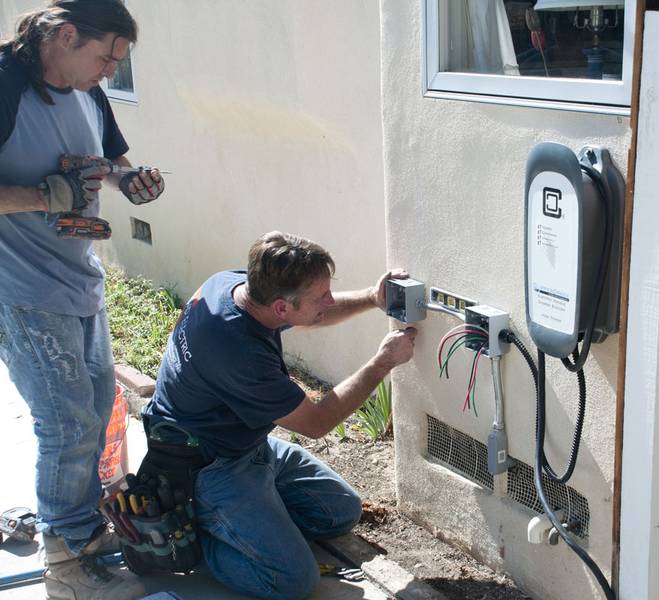Our installation and maintenance of EV Charger at your home

EVs need electricity to charge their batteries and that electricity must come from somewhere. That “somewhere” is the electric utility network or “grid” and a cable that connects the EV to the electrical grid—the EV’s umbilical cord.The connecting cable, the special plug that mates with a corresponding receptacle on the car, and the electronic sensors and the mechanical relay that makes the final connection between the car and the grid is collectively called Electric Vehicle Supply Equipment (EVSE).Colloquially, the EVSE is known as a “charge station”. However, the EVSE is not the battery charger, which is located in the car itself. The EVSE merely connects the car’s battery charger to a source of electricity. Thus, you have to charge at home. To do so, you must install an EVSE--or charge station--so that you can plug in your EV and recharge its traction batteries.
Charging Levels: 1, 2, 3
The Nissan Leaf is shipped with a “trickle charge” or Level 1 EVSE. This connects or plugs into a conventional 120-volt electrical outlet common across North America. To recharge the Leaf’s 24 kWh bank of batteries at Level 1 takes 21 hours!
If you drive your Leaf part of every day, Level 1 just isn’t practical. It works. We’ve done it, but it isn’t practical. Level 1 trickle charging is a backup for when all else fails. It’s the emergency charge station you carry with you “just in case” you run out of juice.
For everyday EV use, owners will have a licensed electrician install a 240-volt or Level 2 EVSE. Level 2 will operate on a dedicated circuit similar to that for an electric dryer or—for even more power—an electric welder. Our Leaf will charge in 3.5 to 4 hours connected to a Level 2 charge station and this is typical for cars with this size traction battery.
Level 3 EVSEs charge at an even higher voltage and current than Level 2. The Leaf, and other Japanese cars using the CHAdeMO standard, charges at 480-volts DC. They can recharge their traction batteries to 80% of capacity within 30 minutes.
In contrast to the other charge stations, Level 3 EVSEs include the charger. They have a high-voltage connection to the utility and convert the utility’s AC to DC at the charge station and feed high-voltage DC directly to the EV’s batteries, bypassing he car’s onboard charger. As a result of including the inverter, and because a Level 3 LVSE require higher-rated components, Level 3 charge stations are very expensive—in the range of $10,000 to $20,000. Thus, they’re not suitable for charging at home.
Level 3 charge stations allow both intracity and intercity trips with today’s EVs and can be found as part of growing public charging networks. Most Nissan dealers, for example, have a Level 3 charge station using the CHAdeMO standard.
If you’re driving any distance at all in today’s EVs you need a network of quick charge stations. They allow you to make trips beyond one charge with a wait to recharge of enough time for a cup or tea (from which the term CHAdeMO is derived) or a cup of coffee.
